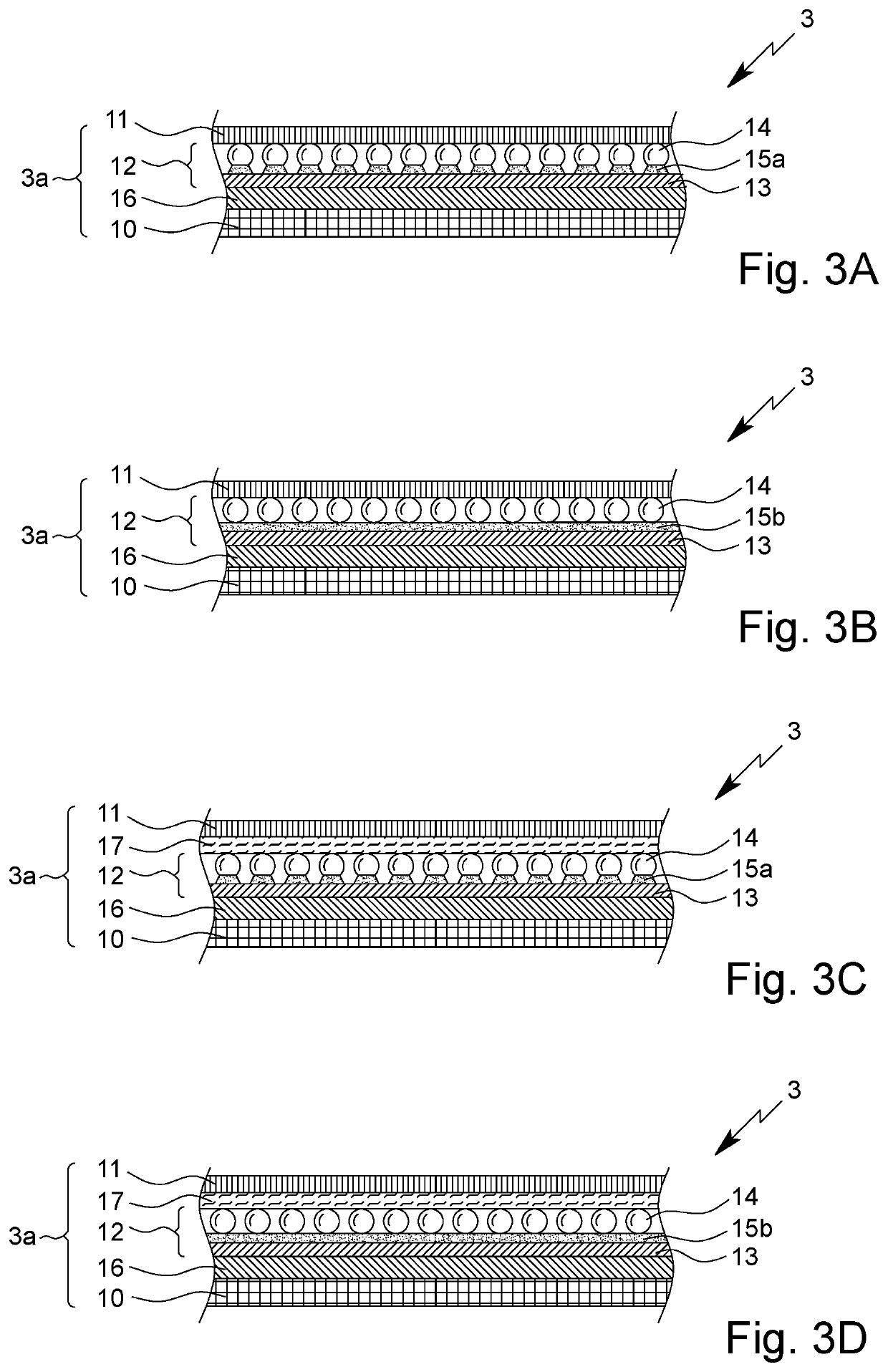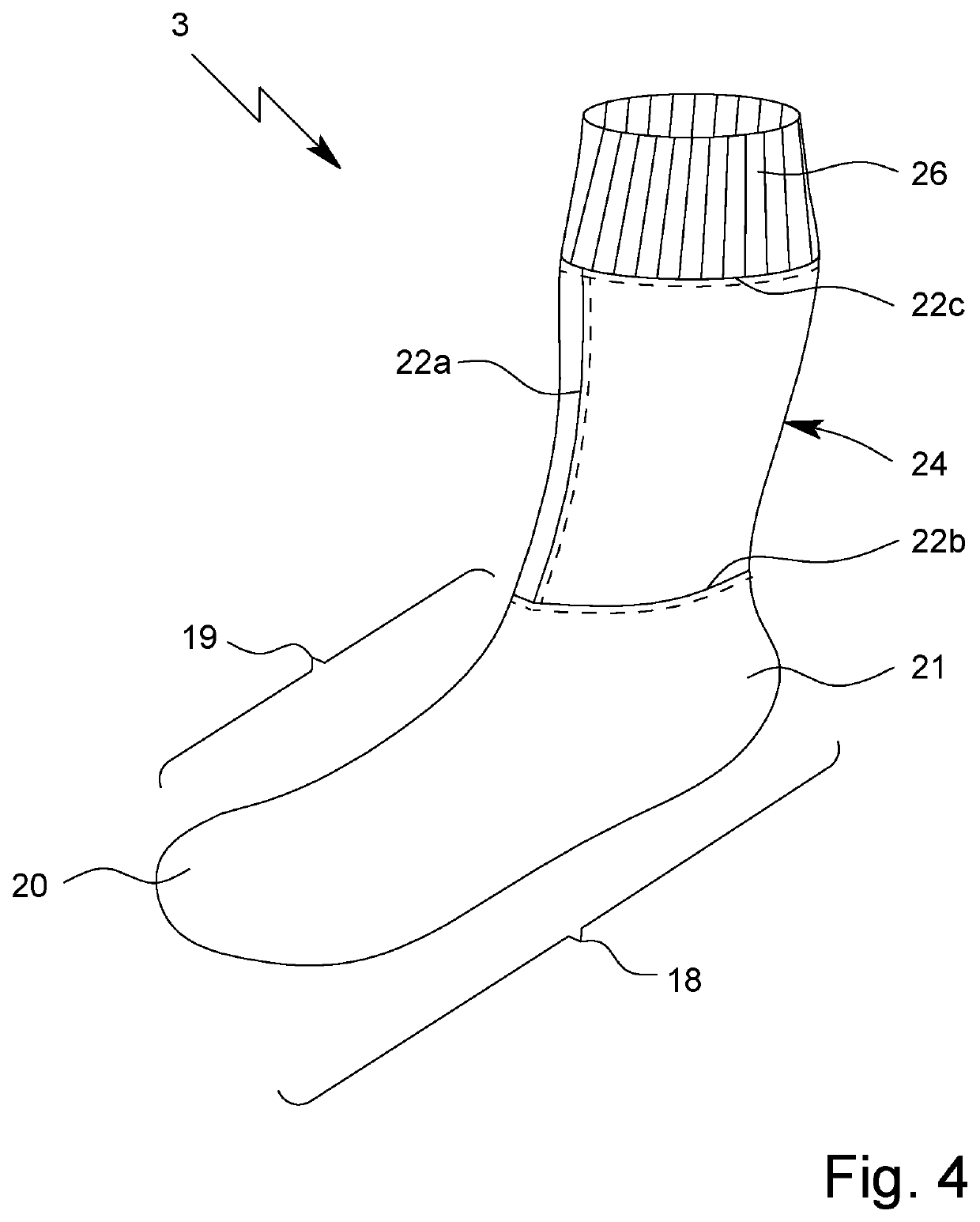Functional footwear unit
a functional and footwear technology, applied in the field of protective clothing or protective equipment, can solve the problems of severe and sometimes irreversible bodily injury, severe health impairment, chemical, biological and nuclear toxic or harmful substances, etc., and achieve the effects of reducing contamination, reducing weight per unit area, and improving wear comfor
- Summary
- Abstract
- Description
- Claims
- Application Information
AI Technical Summary
Benefits of technology
Problems solved by technology
Method used
Image
Examples
examples
[0207]Various foot coverings or footwear units are prepared and investigated below with respect to their protective function against toxic or harmful substances (here specifically: mustard gas, HD). In this respect, the following materials are used:
[0208]a) a material based on a conventional leather boot, which comprises leather as an outer layer or upper material and an underlying lining layer, wherein the underlying material contains neither an adsorptive material nor a barrier layer in the form of a membrane (comparison material A);
[0209]b) a material based on a leather boot with an integrated adsorptive material in the form of particulate activated carbon; the material comprises leather as an external or upper material and an adsorption layer arranged thereunder, wherein the adsorptive material is in the form of a particulate activated carbon arranged between two textile layers; the material is in the form of a composite with permanent fixation of the respective layers, wherein ...
PUM
 Login to View More
Login to View More Abstract
Description
Claims
Application Information
 Login to View More
Login to View More - R&D
- Intellectual Property
- Life Sciences
- Materials
- Tech Scout
- Unparalleled Data Quality
- Higher Quality Content
- 60% Fewer Hallucinations
Browse by: Latest US Patents, China's latest patents, Technical Efficacy Thesaurus, Application Domain, Technology Topic, Popular Technical Reports.
© 2025 PatSnap. All rights reserved.Legal|Privacy policy|Modern Slavery Act Transparency Statement|Sitemap|About US| Contact US: help@patsnap.com



